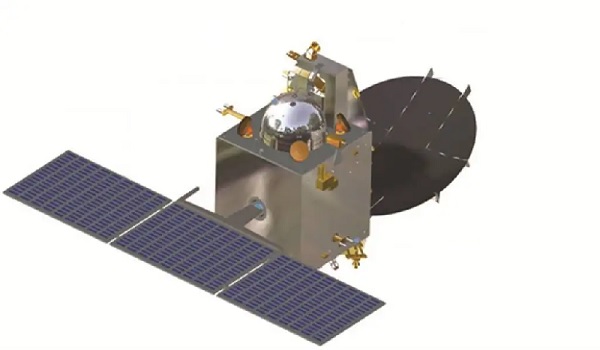All You Need to Know About the Mangalyaan Mission
Written by Prarthana Sheopuri. Managing Editor, I Kid You Not.
Mars Orbiter Mission, or as it’s been popularly called, the Mangalyaan, is a space probe orbiting Mars. It was India’s first interplanetary mission.
Written by Prarthana Sheopuri. Managing Editor, I Kid You Not.
What’s the Mangalyaan Mission?
Launched on 5 November 2013 by the Indian Space Research Organisation -ISRO, the Mars Orbiter Mission, or as it’s been popularly called, the Mangalyaan, is a space probe orbiting Mars. It was India’s first interplanetary mission.

Image Credit: ISRO
It also made India the first Asian nation to reach this amazing destination and the first nation in the world to do so on its first attempt!
More about Mangalyaan – The Mars Orbiter Mission( MOM)
On 5th November 2013, the Mars Orbiter Mission probe lifted off from the Satish Dhawan Space Centre, which is ISRO’s mission launch centre located in Sriharikota, Andhra Pradesh. The MOM probe then spent about a month in Earth’s orbit. It went into the orbit of Mars on 24 September 2014, after a 298-day transit to Mars.
Let’s first know a bit about ISRO
The Indian National Committee for Space Research (INCOSPAR) was established by Pandit Nehru under the Department of Atomic Energy in 1962, with the support of Vikram Sarabhai – who was a physicist and astronomer and who is known as the Father of the Indian Space Program.
INCOSPAR grew and became ISRO in 1969. In 1972, the Indian government set up a Space Commission and DOS (Department of Science), bringing ISRO under it.
More about the MOM
On 2 October 2022, it was reported that the orbiter had lost communications with Earth after entering a long 7-hour eclipse period in April 2022 and that it was not designed to survive.
On 3 October 2022, ISRO released a statement that all attempts to revive Mangalyaan had failed and officially declared it dead citing the reasons as the loss of fuel and battery power.
Quiz Time! Test Your Knowledge On Space News!
The cost of the mission
The total cost of the mission was approximately ₹450 Crore, making it the least-expensive Mars mission to date. The low cost of the mission was ascribed to various factors, including a ‘modular approach’, few ground tests and long working days for scientists (18-20 hours), lower worker costs, home-grown technologies, and simpler design.
Scientific objectives of the mission

Here were the main aims of the mission
Exploration of the surface of Mars
Studying the constituents of the Martian atmosphere
Study the dynamics of the upper atmosphere of Mars which is primarily composed of carbon dioxide (95%), molecular nitrogen (2.8%), and argon (2%). It also contains water vapour, oxygen, carbon monoxide, hydrogen, and noble gases. In fact, the atmosphere of Mars is much thinner than Earth’s.
The mission also aimed at providing opportunities to observe Phobos, the Martian moon.
Issues with MOM explained
There were numerous eclipses including one that lasted seven-and-half hours. The satellite battery is designed to handle an eclipse duration of only about one hour and 40 minutes and a longer eclipse would drain the battery beyond the safe limit and unfortunately, that’s exactly what happened. The battery died irrevocably.
Future Missions
The future missions are all lined up with the Mangalyaan-2 launch after Chandrayaan-3. The second Mars mission is still in the planning stages though.
Read about a rare discovery on the red planet here written by Kanav Kapoor when he was in grade 6.

Better Your Child’s G.K. In 3 Minutes – Get This Free Newsletter
Get fun facts, simple and easy news, quizzes, and lots of other interesting things to read in your mailbox – for free! It’s what we call GK-on-the-go!
I Kid You Not now has a large readership across India and also parts of the world. If you want to write for us, you can submit your story here. You can also apply to become a news anchor. Apply here
Read more about cool space stuff, here.
Headline Image Source: Nesnad, CC BY-SA 4.0
via Wikimedia Commons



Comments